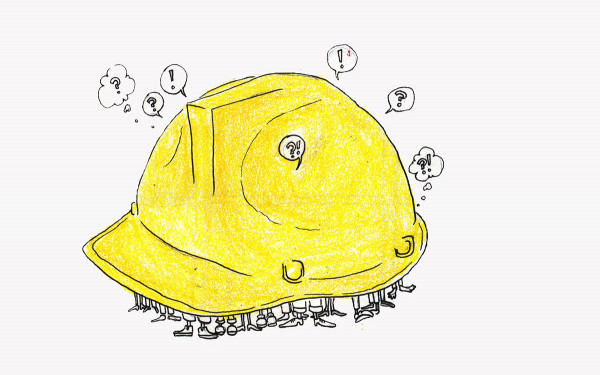Bike Laws in Need of Updating
Spike in Ticketing Won’t Make Streets Safer
Montreal cyclists may have noticed something new during their daily commute.
The last few weeks have seen a massive increase in police presence along routes frequented by cyclists, and tickets are being handed out in staggering numbers. The intensification of ticketing is a problem in itself, but it is also indicative of a larger problem facing cyclists: outdated laws.
Tickets are being handed out for many reasons, and while some of these reasons make sense (like running a yellow light when it’s clearly unsafe), the majority appear to be misguided attempts to criminalize cycling in a city oriented towards car travel. Other reported reasons for the tickets have included lacking the proper reflectors (despite the presence of numerous lights), or failing to come to a complete stop at a stop sign, even if the intersection is clear. Considering the increase in cyclists in the city, as well as how easy it is becoming to travel by bike around the city, the law should be adjusted to reflect these changing realities.
In a recent interview on CBC Daybreak, cyclist Philippe Raymond mentioned that, in his 30 years of pedalling around the city, he has never seen such a heavy police presence focused on ticketing cyclists, nor has he seen fines being handed out for the obscure offences that are now being targeted. In response to the swelling police presence, Montrealer Dominik Richard has created a Google Map allowing people to add locations where police have been spotted giving out tickets. It’s an ingenious idea, and it helps foster a community of individuals who see these tickets as having a hugely negative impact on the Montreal cycling community, as well as those hoping to get into cycling themselves.
Like Raymond and Richard, I also believe that the intensified fining of cyclists is misguided—why are cyclists being ticketed for trivial things like a missing pedal reflector, when motorists routinely run through stop signs and behave in a way that puts cyclists (and pedestrians) at risk of injury or death? When was the last time the police aggressively targeted motorists as they are now with those on bikes? And why does it come only weeks after Urban Bike Week, an event that saw Montreal cyclists get together to promote the thing they love, and to find ways to make cycling more mainstream and less dangerous?
With the documented increase in public transportation, as well as the recent addition of more BIXI stands and bike lanes, laws for cyclists should be adapting to reflect the increasing interest in alternate modes of getting around. By refusing to recognize the ever growing presence of a Montreal bike community, a disservice is being done to all. Current laws, such as those which require reflectors on both pedals, do not reflect advances in bicycle technology; clip-in pedals do not allow the rider to have reflectors on their pedals. Certain sections of Quebec’s Highway Safety Code are also vague; riders are told to stay to the extreme right, but on Montreal’s narrow streets that means riding dangerously close to parked cars, and running the risk of being hit by an opening car door, which in some cases has killed people.
Enforcing outdated or ambiguous laws solves nothing, it only entrenches the attitude towards bikers as reckless, and dissuades those who wish to start cycling. Ticketing also isn’t the only way to enforce the law, and police should not rely so heavily on it. In Portland, Oregon and Amherst, Massachusetts, police who stopped cyclists for lacking the proper lights or reflectors gave those they stopped the required equipment; their goal was to create awareness, rather than to penalize cyclists. This happened in Montreal, to a smaller extent, along de Maisonneuve Blvd. a couple years ago. Bringing that back will more effectively persuade cyclists than the threat of a ticket.
The city has announced it is putting together a new advisory committee that will help better plan cycling infrastructure—which indicates that things are moving in the right direction. However, if the laws cyclists are told to obey remain unchanged, all this new infrastructure won’t do much to increase the number of people on bikes.
Reckless cyclists exist, just as reckless drivers do, and breaking the law should not go unpunished, but laws that are no longer relevant should not be maintained either. Placing such a massive police presence on the streets sends a clear message to cyclists. Despite the laundry list of issues the city currently faces, for some reason they are the ones being targeted.
In a previous version of this article, it was reported that Philippe Raymond created the map, but in reality it was Dominik Richard. The Link regrets the error.

_900_598_90.JPG)
_600_832_s.png)


_600_375_90_s_c1.jpg)

